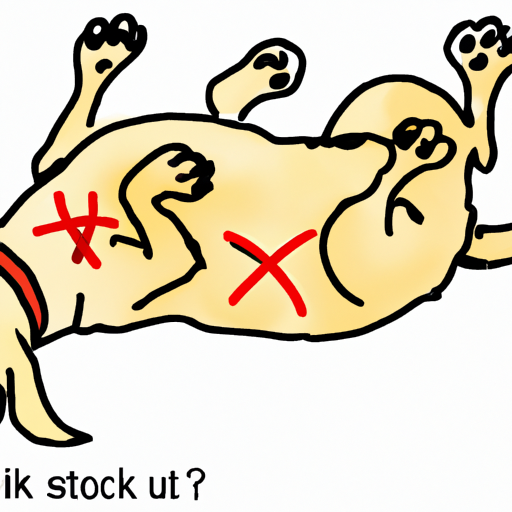1. Understanding Your Dog’s Senses
Your beloved four-legged friend experiences the world in a much different way than you do. Dogs rely heavily on their sense of touch, which is far more developed than ours. They don’t just feel a gentle stroke or a comforting pat, they feel every individual hair being touched, every tiny shift in pressure. This heightened sensitivity can tickle them in certain areas.
2. Identifying Your Dog’s Ticklish Spots
Just like us, dogs have ticklish spots too. Here are some common areas where your dog might enjoy a good tickle:
- Under the chin: Many dogs love to be scratched here, which may cause them to stretch out their necks and close their eyes in bliss.
- Belly: The belly is a very sensitive area for dogs. Some dogs may enjoy a gentle tickle here, while others may be more protective of this vulnerable area.
- Base of the tail: This is a spot that many dogs love to have scratched or tickled.
3. The Science Behind Dog Tickling
According to scientists, the reaction to tickling is a natural defense mechanism. When you tickle your dog, you’re actually stimulating the nerve endings in their skin. This stimulation sends signals to the brain, which interprets them as a tickling sensation.
| Nerve Stimulation | Result |
|---|---|
| Light touch | Tickling sensation |
| Heavy touch | Normal sensation |
4. The Benefits of Tickling Your Dog
Tickling isn’t just fun for your dog – it also has a number of benefits:
- Strengthening Your Bond: Tickling can help to strengthen the bond between you and your dog by fostering trust and affection.
- Reducing Stress: Just like with humans, laughter (or in this case, a happy wagging tail) can help to reduce stress and anxiety in dogs.
- Providing Physical Stimulation: Tickling can provide a form of physical stimulation, helping to keep your dog active and healthy.
5. The Art of Tickling Your Dog
When tickling your dog, it’s important to pay attention to their reactions. If they seem to be enjoying it, continue. If they appear uncomfortable or try to move away, stop immediately.
Remember that every dog is different. What one dog enjoys, another may not. It’s all about finding what works for your individual dog and respecting their boundaries.
FAQ Section
Q1: Can tickling harm my dog?
A: No, tickling won’t harm your dog as long as it’s done gently and respectfully. If your dog shows any signs of discomfort, you should stop immediately.
Q2: What if my dog doesn’t like to be tickled?
A: That’s okay. Every dog is different. Always respect your dog’s boundaries.
Q3: Can I tickle my puppy?
A: Yes, you can tickle your puppy. However, be extra gentle as puppies are more sensitive.
Q4: What if my dog is extremely ticklish?
A: If your dog is extremely ticklish, they might just be more sensitive. Be gentle and make sure you’re not causing them any discomfort.



